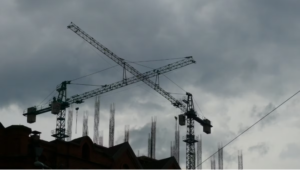
Managing a large-scale commercial construction project comes with significant responsibilities—none more important than ensuring the safety of everyone on-site. These projects often involve multiple contractors, heavy machinery, and elevated work areas, creating a complex environment where risks can quickly escalate. Safety must be an integral part of the planning and execution process, not an afterthought.
Below are five essential safety measures every construction manager or developer should prioritize to protect workers, stay compliant with regulations, and keep the project running smoothly.
1. Use Professional Commercial Scaffolding Services
One of the most critical safety components on any large construction site is scaffolding. Rather than attempting to build or modify scaffolding in-house, always hire licensed Commercial Scaffolding Services. These professionals are trained to erect secure, OSHA-compliant scaffolds that can withstand the required load and environmental conditions. They also conduct detailed inspections to check for stability, structural weaknesses, or damage.
In large-scale commercial projects, where height and access are vital, a reliable scaffolding system reduces the risk of falls, improves worker efficiency, and ensures that your construction team can operate safely at elevated levels. Proper installation, regular maintenance, and timely dismantling are all part of the service—protecting both lives and your liability.
2. Provide Ongoing Safety Training for All Workers
A one-time safety briefing isn’t enough for large construction sites. All workers should undergo initial training as well as regular refresher courses throughout the duration of the project. These sessions should cover topics like fall prevention, fire safety, electrical hazards, heavy machinery operation, and proper use of PPE (personal protective equipment).
Additionally, workers should be taught how to identify unsafe conditions and how to report them promptly. A well-informed team is not only more efficient but far less likely to be involved in workplace accidents. Consider offering language-specific training for non-English-speaking workers to ensure everyone fully understands the protocols.
3. Control Access to the Job Site
A busy construction site can attract uninvited visitors, contractors who aren’t scheduled to be there, or even curious standers. Without proper access control, these individuals could inadvertently put themselves or others at risk. Set up entry checkpoints, issue ID badges or wristbands, and use fencing or signage to clearly indicate restricted zones.
Many commercial projects also benefit from using digital access systems or on-site security personnel to monitor movement. Keeping unauthorized people out protects your crew, your equipment, and your progress.
4. Schedule Regular Maintenance for Equipment and Machinery
Large-scale projects rely heavily on cranes, excavators, forklifts, and other powerful machinery. When this equipment isn’t maintained properly, it becomes a hazard. Develop and stick to a routine maintenance schedule that includes both inspections and servicing.
Operators should be fully trained and licensed to handle each type of machinery. Daily pre-use checks help catch issues early, preventing costly breakdowns or accidents. Well-maintained equipment is not only safer but also more productive and reliable.
5. Foster Clear and Constant Communication
Effective communication is the backbone of a safe work environment. Construction teams should have access to communication tools such as radios, mobile apps, or designated communication officers. Daily safety meetings or “toolbox talks” are also useful for updating everyone on site conditions, changes in the schedule, or new hazards.
Encourage an open-door policy for reporting concerns or unsafe practices. When communication flows freely, mistakes are minimized, and safety is reinforced across every level of the project.
